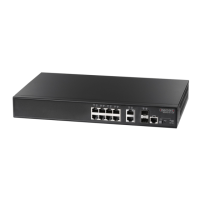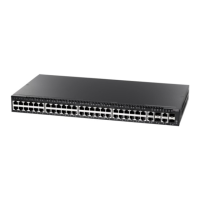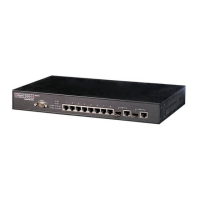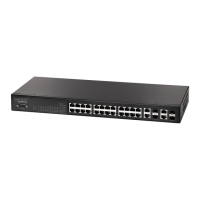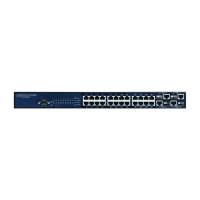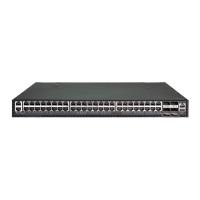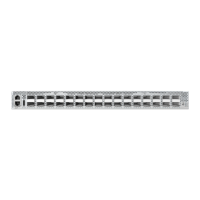– 435 –
17 GENERAL IP ROUTING
This chapter provides information on network functions including:
◆ Ping – Sends ping message to another node on the network.
◆ Trace – Sends ICMP echo request packets to another node on the
network.
◆ Address Resolution Protocol – Describes how to configure ARP aging
time, proxy ARP, or static addresses. Also shows how to display
dynamic entries in the ARP cache.
◆ Static Routes – Configures static routes to to other network segments.
◆ Routing Table – Displays routing entries learned through dynamic
routing and statically configured entries.
◆ Equal-cost Multipath Routing – Configures the maximum number of
equal-cost paths that can transmit traffic to the same destination
OVERVIEW
This switch supports IP routing and routing path management via static
routing definitions (page 447) and dynamic routing protocols such as RIP,
OSPF (page 484 or 502, respectively). When IP routing is is functioning,
this switch acts as a wire-speed router, passing traffic between VLANs with
different IP interfaces, and routing traffic to external IP networks. However,
when the switch is first booted, default routing can only forward traffic
between local IP interfaces. As with all traditional routers, static and
dynamic routing functions must first be configured to work.
INITIAL
CONFIGURATION
By default, all ports belong to the same VLAN and the switch provides only
Layer 2 functionality. To segment the attached network, first create VLANs
for each unique user group or application traffic (page 156), assign all
ports that belong to the same group to these VLANs (page 158), and then
assign an IP interface to each VLAN (page 438). By separating the network
into different VLANs, it can be partitioned into subnetworks that are
disconnected at Layer 2. Network traffic within the same subnet is still
switched using Layer 2 switching. And the VLANs can now be
interconnected (as required) with Layer 3 switching.
Each VLAN represents a virtual interface to Layer 3. You just need to
provide the network address for each virtual interface, and the traffic
between different subnetworks will be routed by Layer 3 switching.
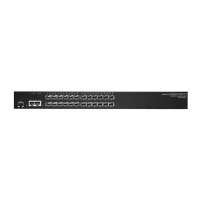
